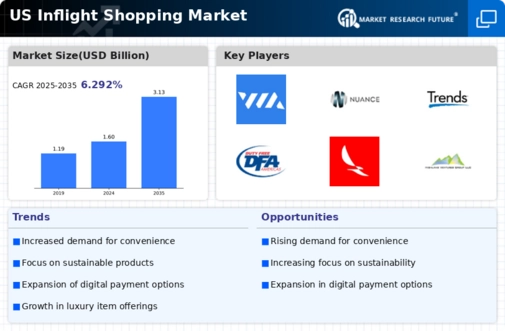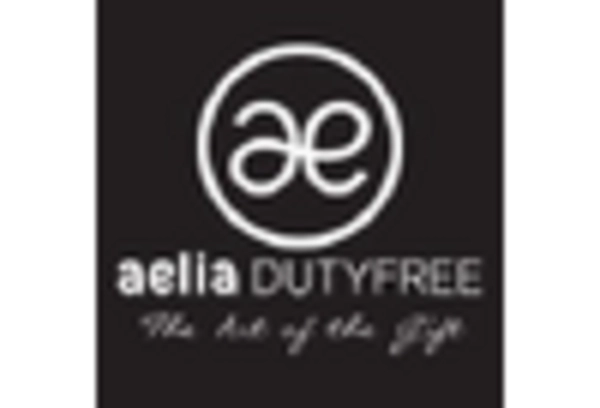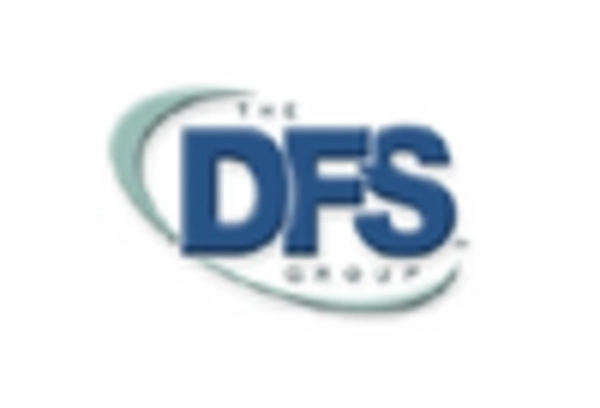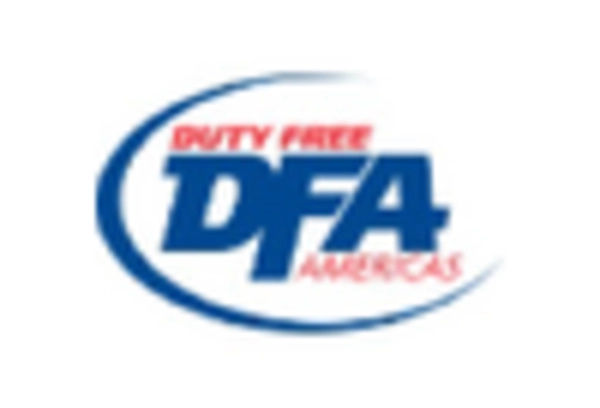Evolving Consumer Preferences
Consumer preferences are evolving rapidly, influencing the inflight shopping market significantly. Passengers are increasingly seeking unique and high-quality products that reflect their personal tastes and lifestyles. This shift is evident in the growing demand for premium brands and exclusive items that are not readily available on the ground. Data suggests that around 45% of travelers are willing to spend more on luxury goods during flights, indicating a lucrative opportunity for airlines to cater to this market segment. Additionally, the rise of experiential purchases, such as local artisanal products, is reshaping the inflight shopping landscape. Airlines that adapt their offerings to align with these changing preferences may enhance customer satisfaction and loyalty, ultimately driving sales in the inflight shopping market.
Emerging Trends in Sustainability
Sustainability is becoming a pivotal focus within the inflight shopping market, as consumers increasingly prioritize eco-friendly products. Airlines are responding to this trend by incorporating sustainable practices into their retail offerings, such as sourcing products from environmentally responsible brands. Data indicates that approximately 30% of travelers are more likely to purchase products that are marketed as sustainable. This shift presents a unique opportunity for airlines to align their inflight shopping strategies with consumer values. By promoting eco-friendly products and practices, airlines can not only enhance their brand image but also potentially increase sales. As sustainability continues to gain traction, the inflight shopping market may see a significant transformation, driven by consumer demand for responsible purchasing options.
Regulatory Changes and Compliance
The inflight shopping market is subject to various regulatory changes that can impact operations and product offerings. Compliance with safety regulations, customs laws, and consumer protection standards is essential for airlines and retailers. Recent updates in regulations may require airlines to adapt their inflight shopping strategies, ensuring that all products meet safety and quality standards. For instance, the introduction of stricter guidelines on the sale of certain items could influence inventory decisions. Airlines that proactively address these regulatory challenges may not only avoid penalties but also enhance their reputation among consumers. By ensuring compliance, airlines can foster trust and loyalty, which are crucial for driving sales in the inflight shopping market.
Increased Competition Among Airlines
The inflight shopping market is witnessing intensified competition among airlines, prompting them to enhance their retail offerings. As airlines strive to differentiate themselves, many are investing in exclusive partnerships with renowned brands and expanding their product ranges. This competitive landscape is likely to lead to more innovative and appealing inflight shopping experiences for passengers. Recent statistics indicate that airlines with robust inflight shopping programs can generate up to 10% of their total revenue from retail sales. Consequently, airlines are increasingly focusing on marketing strategies that highlight their unique product offerings, which may attract more customers and encourage higher spending during flights. This competitive drive could ultimately benefit consumers, as they gain access to a wider variety of products and services in the inflight shopping market.
Technological Advancements in Payment Systems
The inflight shopping market is experiencing a notable shift due to advancements in payment technologies. Contactless payment options, mobile wallets, and in-flight app integrations are becoming increasingly prevalent. These innovations enhance the shopping experience for passengers, allowing for seamless transactions. According to recent data, approximately 60% of travelers prefer using digital payment methods while flying. This trend indicates a growing demand for efficient and secure payment solutions within the inflight shopping market. Airlines that adopt these technologies may see an increase in sales, as passengers are more likely to make purchases when the payment process is streamlined. Furthermore, the integration of loyalty programs with payment systems could further incentivize spending, potentially boosting overall revenue for airlines and retailers involved in the inflight shopping market.

















Leave a Comment